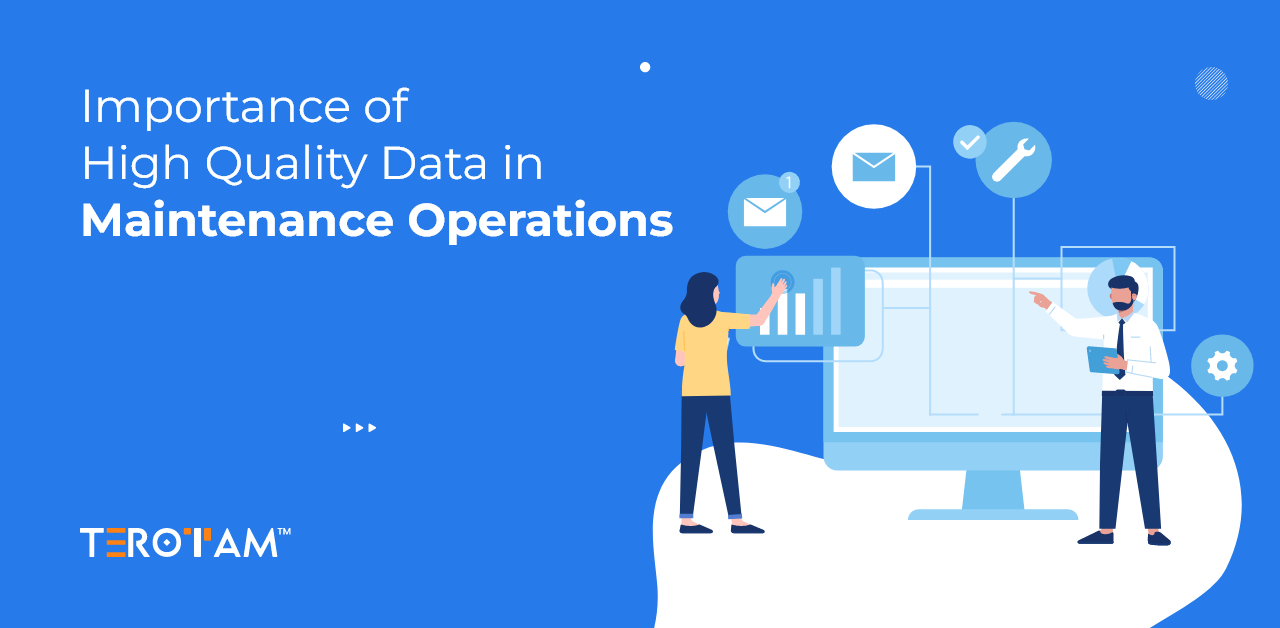Collecting accurate and actionable maintenance data is essential for any organization that wants to reduce downtime, extend equipment life, and optimize operational efficiency. Maintenance teams often face challenges such as inconsistent logs, incomplete records, and fragmented systems, which can compromise decision-making and increase costs. Without reliable data, predicting failures and planning maintenance becomes reactive rather than proactive.
High-quality maintenance data empowers teams to adopt predictive strategies, allocate resources effectively, and make informed decisions. Leveraging the right tools, technology, and processes ensures that every piece of data collected reflects the true condition of equipment and operations. This not only improves reliability but also supports regulatory compliance and audit readiness.
In this article, we will explore best practices, tools, and strategies for collecting high-quality maintenance data and how it can be used to drive smarter decisions across maintenance operations.
Why high-quality maintenance data is essential
Maintenance data becomes truly valuable when it reflects the actual performance and condition of equipment. Accurate and complete records help teams spot early warning signs, plan interventions effectively, and avoid costly unplanned downtime. Without reliable information, maintenance efforts often turn reactive, draining time and resources.
High-quality data allows teams to schedule interventions based on real operational needs rather than arbitrary timelines. Tracking metrics like vibration, temperature, or operating hours ensures machines are serviced at the right moment, extending equipment life and improving overall reliability.
Clear and consistent data also makes resource management more efficient. Maintenance managers can prioritize critical tasks, allocate personnel intelligently, and ensure spare parts are available exactly when needed. This transforms maintenance from a routine task into a measurable and optimized process.
Accurate maintenance records support accountability and compliance. Standardized logs help teams demonstrate adherence to safety and operational standards, streamline audits, and provide a reliable reference for decision-making. Reliable documentation ensures maintenance strategies are executed correctly and consistently.
Common challenges in collecting maintenance data
Maintenance teams often struggle to gather reliable data due to operational and technological hurdles. Inconsistent records, missed inspections, and fragmented systems can lead to incomplete insights, making it harder to plan effective maintenance. Without tackling these challenges, maintenance strategies can become reactive and inefficient.
Human factors also play a significant role. Technicians may resist digital tools or fail to follow standard procedures, while multiple uncoordinated data sources make it difficult to get a clear picture of equipment performance. Recognizing these challenges is the first step toward improving data quality and driving smarter maintenance decisions.
- Inconsistent recording across teams and shifts creates gaps in historical data.
- Missed inspections or incomplete work orders leave critical information unavailable.
- Multiple uncoordinated sources, such as spreadsheets, CMMS, and sensor data, can produce conflicting information.
- Technicians may resist using digital tools or sensors due to unfamiliarity or perceived complexity.
- Real-time monitoring is difficult when manual processes dominate data collection.
- Lack of standardized terminology or units complicates analysis and reporting.
Best practices to ensure high-quality maintenance data
Capturing accurate maintenance data starts with creating a clear process that everyone on the team can follow. When teams understand what needs to be recorded, how to record it, and why it matters, the information collected becomes more reliable and actionable. Structured practices, combined with the right tools, ensure maintenance records truly reflect equipment conditions.
1. Define clear data standards
Consistency is key. Standardize units, terminologies, and failure codes across the organization. For example:
- Record runtime in hours or cycles consistently.
- Use predefined codes for failure types (mechanical, electrical, software).
2. Leverage digital tools
A robust CMMS or maintenance management software helps automate data capture:
- Tracks work orders and maintenance history.
- Integrates sensor data for real-time equipment monitoring.
- Reduces human error by standardizing entries.
3. Implement IoT and sensor technologies
Sensors provide continuous monitoring of critical parameters such as vibration, temperature, and pressure. These insights enable condition-based maintenance, alerting teams to potential failures before they occur.
4. Train maintenance personnel
Personnel must understand the importance of accurate data, proper CMMS usage, and correct sensor interpretation. Regular training ensures consistency and reliability in recorded information.
5. Audit and validate data regularly
Periodic checks against actual equipment conditions help identify discrepancies, maintain data integrity, and ensure the reliability of maintenance decisions.
How to use maintenance data for actionable insights
Collected data only becomes valuable when applied strategically:
- Predictive maintenance scheduling: Identify trends to schedule maintenance before failures occur.
- Resource optimization: Allocate labor and parts efficiently, reducing downtime.
- Root cause analysis: Analyze failures to prevent recurrence and improve procedures.
- Performance tracking: Monitor KPIs such as MTBF (Mean Time Between Failures), downtime, and work order completion rate.
| KPI | Benefit | Actionable Use |
| MTBF | Predict failure patterns | Schedule preventive maintenance |
| Equipment downtime | Identify bottlenecks | Prioritize critical repairs |
| Work order completion | Measure efficiency | Adjust team resources and training |
Tips to maximize maintenance data quality
Reliable maintenance data depends on consistency, discipline, and the right use of technology. Teams that prioritize real-time entry, standard procedures, and proper verification can avoid errors and gaps. Combining manual observations with automated data from CMMS and sensors ensures a complete view of equipment performance. Continuous training, clear responsibilities, and regular review cycles help maintain data accuracy over time. Visual dashboards and performance indicators make it easier to spot anomalies, track trends, and take timely action. Small improvements in daily practices often have a significant impact on long-term reliability and decision-making.
- Capture information immediately during inspections or repairs to reduce errors.
- Integrate CMMS with IoT devices for automated and continuous equipment monitoring.
- Use consistent formats, units, and codes across all teams and shifts.
- Define clear responsibilities for recording, verifying, and reviewing maintenance data.
- Conduct regular audits to compare records with actual equipment conditions.
- Track trends, anomalies, and KPIs through dashboards and visualization tools.
- Keep teams updated with training on best practices, CMMS features, and sensor interpretation.
Putting it to the end
Accurate maintenance data drives effective planning, resource allocation, and equipment reliability. When teams implement structured practices, use the right tools, and ensure consistent recording, they can anticipate failures, reduce unplanned downtime, and improve overall operational performance. Reliable data supports maintenance strategies that are proactive rather than reactive.
Consistent collection, validation, and analysis of maintenance records allow teams to identify trends, optimize interventions, and make informed decisions. This approach improves equipment uptime, reduces maintenance costs, and strengthens operational efficiency across the facility.
To learn more about tools and strategies for collecting and leveraging high-quality maintenance data, contact contact@terotam.com








